
Natural change often perilous, but healthy
Although some people may consider the destructive combustion of burning material that ignites to give off light, heat and flame a natural disaster, Yellowstone National Park officials do not see it that way.
In most cases, they consider wildfires to be part of a healthy process of natural regeneration.
Incidents of natural activity such as wildfires are constantly occurring in national parks throughout the country. Natural activities include geological processes hurricanes, floods and other activity.
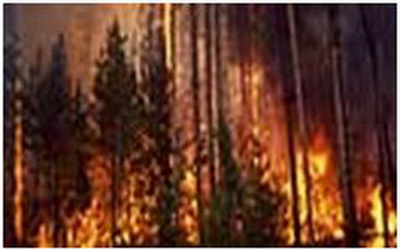 |
At left, fires in 1988 affected 36 percent of total park acreage in Yellowstone National Park. Below, damaged levees are a result of Nisqually River flooding in the Longmire area of Mount Rainier National Park (Photos courtesy of the National Park Service). |
Natural change can range from being dangerous and threaten wildlife and park visitors to natural processes of regeneration that are essential in keeping the site healthy.
Lightning-caused fires burned in Yellowstone National Park from June until July 14, 1988. Park policy at that time was to let all natural caused fire continue to burn. As a result, fires burned 793,880 acres of the park.
“The fire was self-contained in a non-developed area and so it was allowed to burn for research benefits,” Yellowstone Deputy Chief Ranger Nick Herring said.
The portion of the park that was burned in the fire produced a mosaic area of forest. This helps shape the landscape and provides for a mixed canopy of burned and regenerating material that helps the park to self-regulate and prevent catastrophic fires in the future.
“We want mosaic area in the landscape,” Herring said. “The newly burned natural part of the ecosystem is necessary for a healthy natural system.”
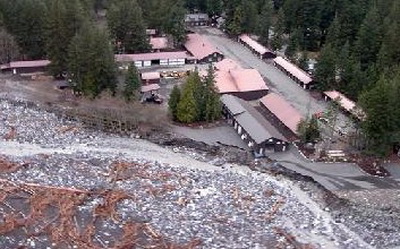 Chief of Interpretation and Public Affairs at Big Cypress Natural Preserve Bob DeGross agrees with Herring.
Chief of Interpretation and Public Affairs at Big Cypress Natural Preserve Bob DeGross agrees with Herring.
“Fires, hurricanes and occasionally freezing are three things that help shape the landscape as we see it today,” DeGross said.
This natural activity in a forest type area causes dead and dying vegetation to be replaced with new and exotic species that come in and take over. Once vegetation is killed, the new species of plant and animal are allowed to form in newly open space. This is called gap phase replacement.
“This is a habitat that goes through extremes on a regular basis such as droughts, floods, hurricanes and fires that can be devastating natural disasters, but on the natural side of things they just are,” DeGross said. “Neither good nor bad, they help shape the landscape.”
Hurricane Andrew in 1992 caused original vegetation at Big Cypress to be denuded due to enormous stress from the hurricane and this created a gap in the area. There was a large scale spread of pioneer species such as malaleuca as a result. Pioneer species tend to take over an area because there is no natural predator for the new species.
“We typically don’t go in and replant. Policy is to let natural processes to take place,” DeGross said. “It is costly and takes a lot of manpower to go in and eradicate exotic species.”
On the other hand, Mount Rainier National Park includes historic sites and its policy is to step in when necessary and plausible to ensure the safety of visitors and save structures from damage.
| At right, mosaic fire patterns such as this one in Yellowstone’s Madison Canyon were the result of the 1988 fires (Photo by Jim Peaco). Below, some of the grass was more nutritious for the elks in Yellowstone to eat after the fires (Photo by Jim Peaco). | 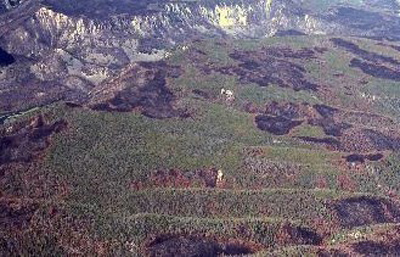 |
“We are mandated to maintain the park in natural features and settings. However interface of nature and buildings causes at least major discussion,” Mount Rainier Project Manager and Civil Engineer Eric Walkinshaw said.
Mount Rainier is a single mountain park that creates elevation change throughout the region that supports flood and accumulation of debris. Flows of water and debris become narrow braided rivers as they come in contact with man-made structures and diverse natural features in the landscape.
Longmire is the largest developed area of the park and it straddles the Nisqually River that floods due to heavy rainfall and glacial melting.
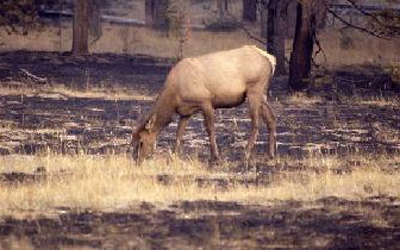 The floods can be sudden and violent because rivers in the park combine to produce surges of water sometimes brought about when a series of small lakes form in depressions in the ice and the upper one overflows, cutting a channel in the ice to the lower one down.
The floods can be sudden and violent because rivers in the park combine to produce surges of water sometimes brought about when a series of small lakes form in depressions in the ice and the upper one overflows, cutting a channel in the ice to the lower one down.
“Townies use large rocks against the side of facilities to counteract forces of the river, but we find that the force of the river overcomes these and we lose that facility,” Walkinshaw said.
Log cribbing and rock revetments were built and maintained to protect Longmire from flooding in the past, but a devastating flood in 2006 proved that more extensive revetment is required.
A single storm hit across the entire park and caused damage throughout the entire region. Visitors and almost all park staff had to evacuate the area and destruction of structures and flooded areas came with deposition that reached between four to five feet.
“If a building is not sustainable and we can’t maintain it anymore, we lose a feature of significant value,” Walkinshaw said. “We tend to, if we can’t rebuild it, interpret it as what was there in the past.”
In most cases, it is park policy for staff to step in and do what it can to preserve the historic sites of the park.
| Mount Rainier creates elevation change throughout the park, which aids flood and buildup of debris (Photo courtesy of the National Park Service). | 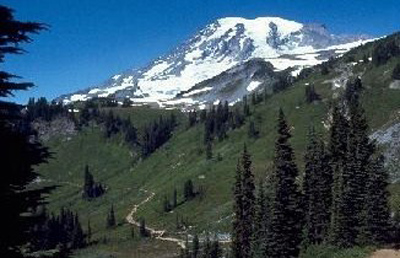 |
Some sites and roads are completely destroyed, but for those that are not, its goal is to improve the damage of structures so that they resemble what they once were. This is a negative effect of natural activity in the park and Walkinshaw noted that positive effects are a result of natural cause as well.
Still, there are downsides to even the positive effects that natural activity has on an area.
“It benefits natural resources but we lose historic sites,” Walkinshaw said. “There are less people, less disturbances such as that a visitor would have on an area and more animals but visitation will then increase in other areas and these parts might already be overcrowded.”

Comments are Closed